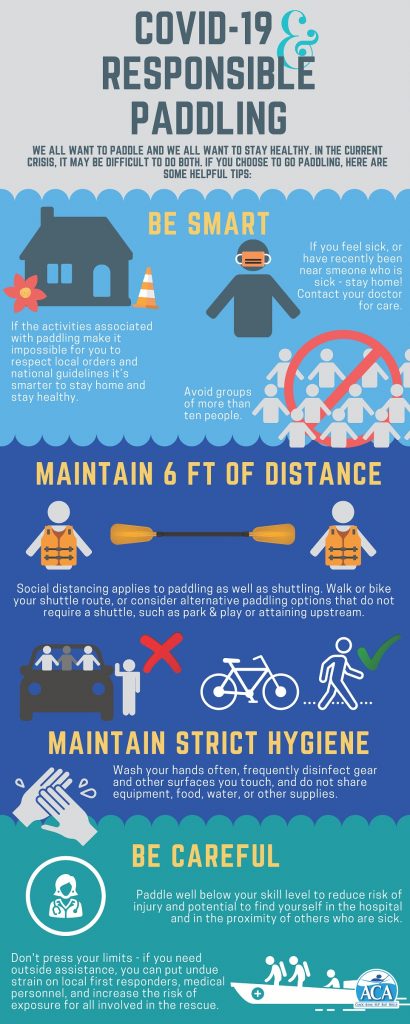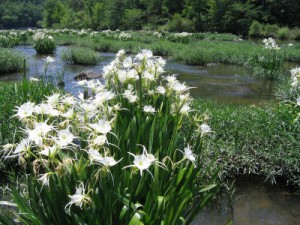
Cahaba Lilies
One of the most iconic plants of the Cahaba River is the Cahaba lily, an aquatic flowering plant which grows only in Alabama, Georgia, and South Carolina. A type of spiderlily belonging to the amaryllis family, the Cahaba lily is noted for the striking beauty of its three-inch-wide white flowers. The lily requires a very specialized habitat—swift-flowing water over rocks and lots of sun—and thus is restricted to shoal areas at or above the fall line.
The Cahaba lilies bloom from mid-May to mid-June (or Mother’s Day to Father’s Day). The best and largest populations in the Cahaba River are located in the Cahaba River National Wildlife Refuge.
How can I see Cahaba Lilies?
One excellent place to view Cahaba lilies is at the Cahaba River National Wildlife Refuge located in Bibb County, Alabama, approximately six miles east of West Blocton on County Road 24.
Directions to the Cahaba River National Wildlife Refuge:
1. Take I-59 South from Birmingham for about 30 miles to the Hwy 5 West Blocton/Centreville exit (Exit 97).
2. Hwy 5/Hwy 11 is 4-lane for about 3 miles where Hwy 5 turns abruptly south (to the left) as a 2-lane. Watch for this turn!
3. Travel about 8 miles south on Hwy 5 to a blinking yellow light. Turn left (onto County Road 24) to West Blocton.
4. Continue straight at the stop sign (passing West Blocton High School and West Blocton Elementary on the right) for 5 miles.
5. Look for the Refuge sign on the right (not the 1st wooden sign which is a sign for the Wildlife Management, but the 2nd sign). Shortly after the sign is a dirt road on the right, River Trace, leading directly into the Refuge.
Cahaba River Society offers guided float trips on the Cahaba River.
We can supply canoes, paddles, life jackets, and a naturalist with the expertise to allow you a unique, up-close experience with the Cahaba River.
On this tour, you will see the beautiful Cahaba lilies first hand in their natural setting. These are rigorous outings that require wading and dragging a canoe over shallow rocky shoals. When very low water conditions occur, we alter the trip so we still see the lilies and enjoy the river, but we avoid a difficult hike down the riverbed. These are our most popular outings, so call soon to reserve your canoe.
Click to view the schedule of Cahaba River Society Guided Canoe Tours.
You can also learn about the Cahaba Lilies through this virtual presentation by Dr. Randy Haddock:
Tips to for paddling safely during Covid-19
How can I learn more about the Cahaba Lily?
Visit the Cahaba Lily Festival in West Blocton. This year’s festival will be held on the last Saturday of May.
You can also visit these online resources:
 How do I identify the Cahaba Lily?
How do I identify the Cahaba Lily?
The Cahaba Lily is sometimes confused with other blooming plants that grow along southeastern waterways. There are a few qualities that are unique to the Cahaba Lily:
- large white blossoms sprout in clusters that bloom only one at a time with each bloom lasting only 24 hours from early May to late July
- bulbs grow wedged in rocks in swift moving shoals that receive direct sunlight
- mature seeds sink in water
The Swamp Lily, Hymenocalis oxidentalis
A plant often mistaken for the Cahaba lily is the Carolina Spider Lily or Swamp Lily, hymenocalis oxidentalis. Though the plants share some characteristics, there are key differences:

- Swamp lily blossoms are in clusters of up to six per stalk occurring in July and August
- Swamp lilies grow in marshy areas
- Seeds float in water
To learn more about hymenocallis oxidentalis, click here to visit its wildflower.org profile.

 How do I identify the Cahaba Lily?
How do I identify the Cahaba Lily?